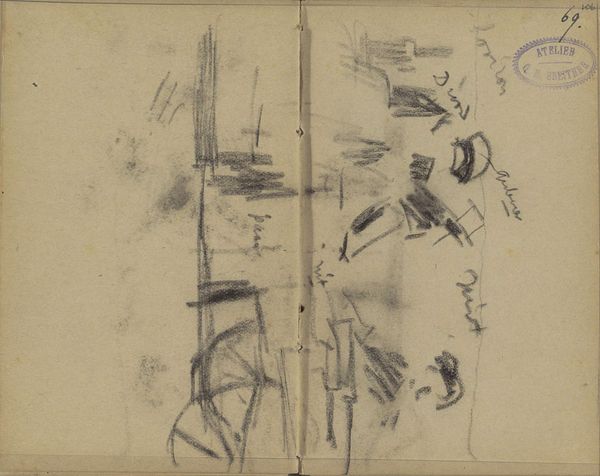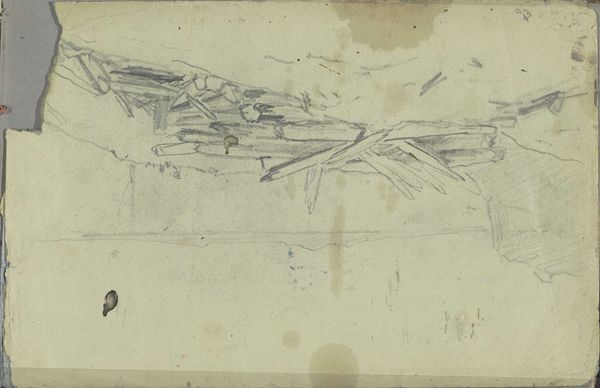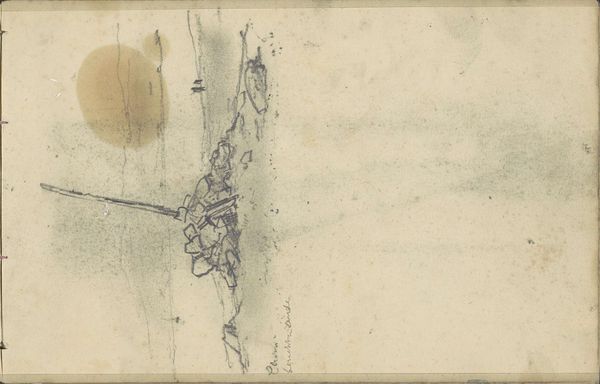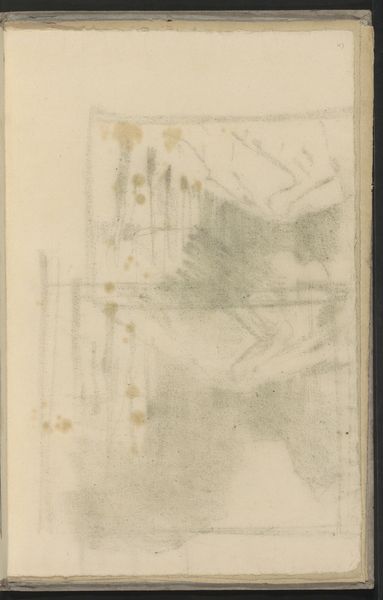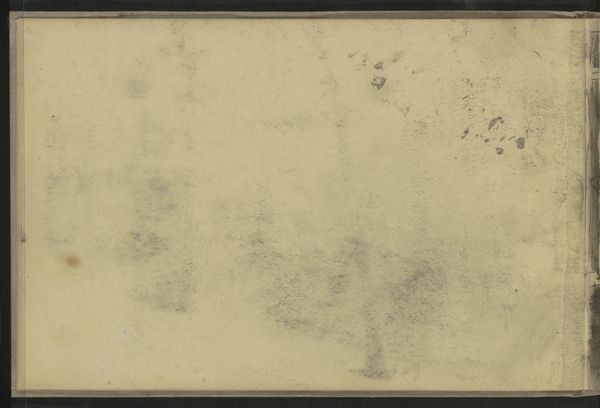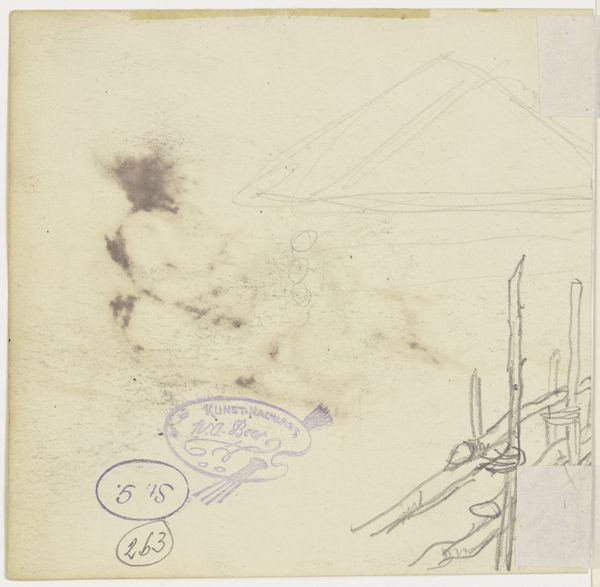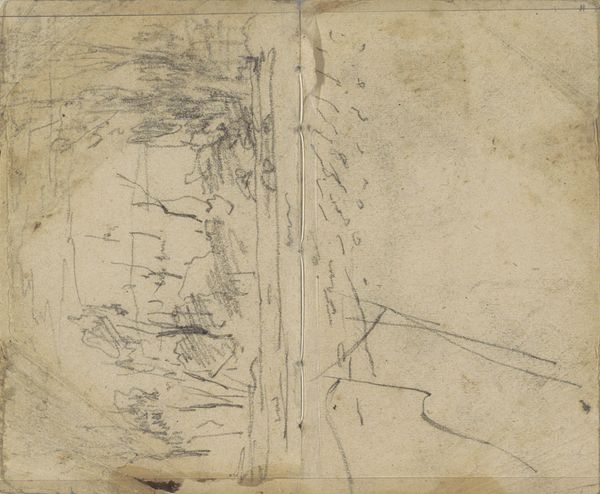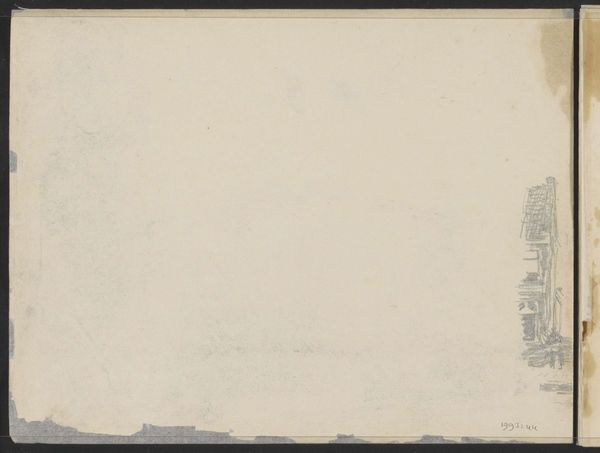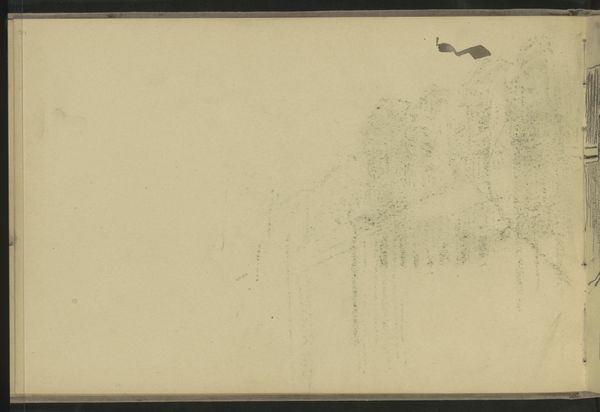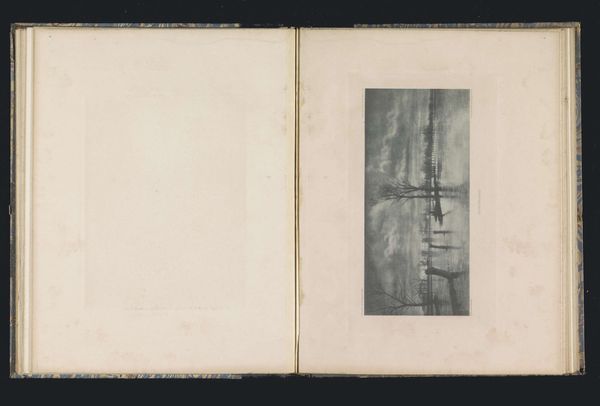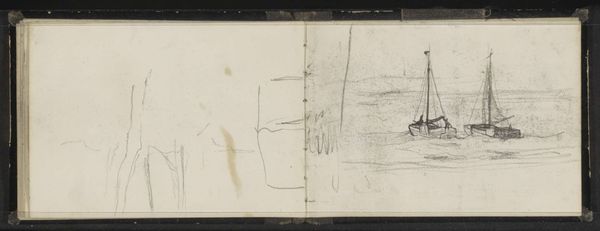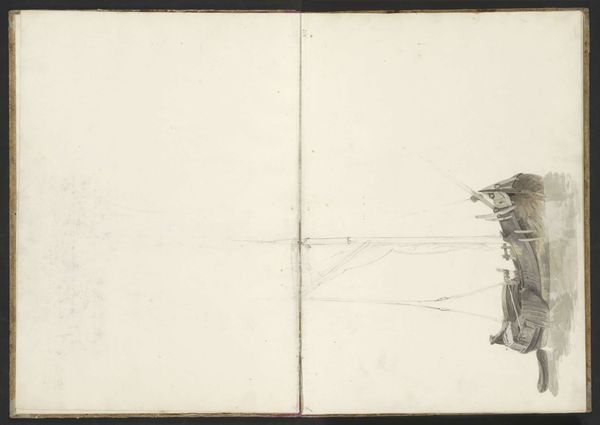
Copyright: Rijks Museum: Open Domain
Editor: Here we have Willem Witsen's "Annotaties", made around 1897 to 1910 using ink and watercolor on paper. The work strikes me as almost accidental in its execution; it looks like a series of chance occurrences captured on the page. What's your take? Curator: I see an exploration of the inherent properties of the materials themselves. Look at the way the ink bleeds and the watercolours pool. Witsen isn't just depicting something, he is actively engaged in a process of mark-making that reveals the material qualities of ink, water, and paper. This challenges a hierarchical division between conception and making. Editor: So, you’re saying it’s less about what it represents and more about the action of its creation? Curator: Precisely! And that production inherently includes material failure, the chance imperfections of a “working” sketch, visible in the stains and smudges on the paper. To understand this work, we have to look at how these materials informed the artist’s hand and how labor became visible. Is Witsen exploring, here, how the economy of artistic practice affects aesthetic results? Is the medium truly the message? Editor: It definitely gives me a new perspective to consider the role these specific materials played and how their properties dictated the result. Thanks for highlighting the medium. Curator: Of course. Considering the material circumstances can uncover layers of meaning often overlooked. It opens art history to the history of labor, economies, and the physical world.
Comments
No comments
Be the first to comment and join the conversation on the ultimate creative platform.
